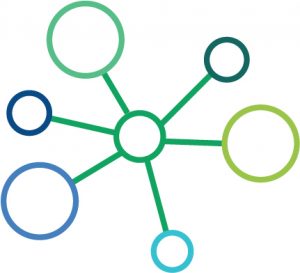Adapting to sea level rise and building regional resilience requires ongoing action at many scales and by numerous organizations, communities, and jurisdictions. Click here or scroll down to see what’s happening around the Bay.
In order to ensure adaptation projects provide multiple benefits, are flexible to changing sea levels and science over time, and recognize impacts to neighboring communities and the region, successful adaptation efforts generally exhibit three key characteristics.
CONNECTED
As we consider which adaptation strategy best protects our shoreline from flooding, projects must be designed to account for the connectivity of public access, water, sediment, and wildlife between the uplands and the Bay. Connectivity must also be considered in terms of how changing the shoreline in one place may positively or negatively impact neighbors through increased erosion.
 COMMUNITY, COLLABORATIVE ACTION
COMMUNITY, COLLABORATIVE ACTION
Given the complexity of our connected shorelines, successful adaptation strategies often require action by multiple jurisdictions or property owners. Adaptation planning is by its very nature a collaborative process that brings together community stakeholders to develop a shared vision of what their shoreline should look like. This is both a challenge and a strength of the process which results in beneficial outcomes not only for flood-resilience, but also for public health, the economy, the environment, social equity, and the community at large.
 CREATIVE
CREATIVE
Sea level rise is an ongoing challenge that requires our community members, local governments, and private developers to consider innovative and creative solutions that can be adapted to changing conditions. This includes exploring multi-benefit natural shoreline protection where appropriate, reevaluating land use policy, and empowering the next generation of young minds to build dynamic and resilient communities.
While there is a lot of work to be done to adapt our region to the realities of a changing Bay, there are already a range of initiatives going on to better understand the areas and assets that are at risk and to start addressing that risk—whether joining a community organization focused on emergency preparedness, voicing your ideas at a county planning meeting, or supporting a citizen science initiative, there are a range of opportunities to get involved! This map presents just a small sampling of this work.
Below the map you will find links to additional resources for finding out about adaptation work in our region.
Here are some links to resources on additional adaptation work in our region:
Integrated Climate Adaptation and Resiliency Program (ICARP) Adaptation Clearing House: The Adaptation Clearinghouse serves as a centralized database to find resources on climate adaptation and resiliency efforts in California. These resources will help guide decision makers at the state, regional, and local levels when planning for and implementing projects to promote resiliency.
Resilient by Design: A year-long collaborative design challenge bringing together local residents, public officials and local, national and international experts to develop innovative community-based solutions that will strengthen our region’s resilience to sea level rise, severe storms, flooding and earthquakes. Learn about the nine projects, sites, and design teams on their site.
California Coastal Conservancy Project Map: A tool to provide information on the more than 1,500 projects completed by the Conservancy since its beginnings. These projects achieve a variety of conservation and recreation purposes, with some projects focused on sea level rise adaptation goas.
ART Bay Area: The project is conducting a regional vulnerability assessment of the Bay Area’s transportation infrastructure, Priority Development Areas (PDAs) and Priority Conservation Areas (PCAs) as identified in the Sustainable Communities Strategy (Plan Bay Area), and vulnerable and disadvantaged communities. The project will also develop a suite of adaptation strategies to improve the resilience of Bay Area transportation assets and communities for inclusion in Plan Bay Area as well as other appropriate local and regional planning documents.
BARHII: The Bay Area Regional Health Inequities Initiative (BARHII) is a coalition of the San Francisco Bay Area’s eleven public health departments committed to advancing health equity. This includes work to incorporate principles of health equity into land use and transportation planning and actively focuses on adaptation planning for the Bay Area.
Resilient Communities Initiative: The Bay Area Resilient Communities Initiative (RCI) is a coalition of eleven of the region’s leading social justice groups, bringing deep grassroots leadership and expertise to community planning.
